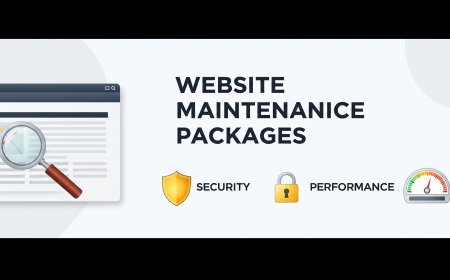Common Challenges in a Dynamics 365 Upgrade
Understanding the common challenges in a dynamics 365 upgrade can help businesses prepare proactively and avoid costly mistakes. Below, we explore the most frequent hurdles and how to address them effectively.

Upgrading to Microsoft Dynamics 365 is a strategic move that offers businesses enhanced capabilities, cloud scalability, and advanced integrations. However, while the benefits are clear, the upgrade process is not without its challenges. Whether transitioning from an older Dynamics version or moving from on-premises to the cloud, a dynamics 365 upgrade requires careful planning and execution.
Many organizations underestimate the complexity of the process, leading to delays, data issues, or resistance from users. Understanding the common challenges in a dynamics 365 upgrade can help businesses prepare proactively and avoid costly mistakes. Below, we explore the most frequent hurdles and how to address them effectively.
1. Inadequate Planning and Scope Definition
One of the biggest challenges in a dynamics 365 upgrade is starting the process without a clearly defined scope. Businesses often dive into the technical aspects without aligning the upgrade with strategic objectives or understanding the full scale of the work involved.
Lack of planning can lead to scope creep, budget overruns, and missed deadlines. To avoid this, organizations must set clear upgrade goals, outline deliverables, and define success metrics. Early stakeholder involvement is also crucial to ensure alignment across departments.
2. Legacy Customizations and Code Conflicts
Many businesses have heavily customized their previous Dynamics versions with scripts, extensions, and third-party tools. Unfortunately, not all legacy customizations are compatible with the latest Dynamics 365 environment.
During a dynamics 365 upgrade, these outdated or unsupported customizations can create conflicts, break functionality, or require significant redevelopment. Its important to audit all custom code and determine whether to retain, replace, or eliminate it. Leveraging native functionality and modern tools like Power Apps or Power Automate can reduce dependency on custom code.
3. Data Quality and Migration Issues
Data migration is one of the most criticaland often most problematiccomponents of a dynamics 365 upgrade. Many organizations discover during the process that their data is inconsistent, incomplete, or outdated.
Migrating dirty data can compromise the functionality and accuracy of the upgraded system. Its essential to clean, validate, and de-duplicate your data before migration. Establishing clear data governance policies and using automated migration tools can also help reduce errors and ensure data integrity.
4. Underestimating Integration Complexity
A modern business relies on multiple integrated systemsCRM, ERP, finance, marketing automation, and more. A dynamics 365 upgrade must account for the compatibility of these existing integrations.
Third-party applications or legacy systems may require adjustments or complete re-integration. Failure to address this can result in broken workflows, data silos, and process inefficiencies. Organizations should map all integrations, test compatibility, and plan for updates or replacements where necessary.
5. User Resistance and Low Adoption Rates
Even the most technically successful dynamics 365 upgrade can fail if users arent on board. Resistance to change is a natural response, especially if the new system looks different, behaves differently, or disrupts existing routines.
Without proper training and communication, employees may revert to manual workarounds or underutilize new features. To overcome this, businesses must invest in user training, provide clear documentation, and offer ongoing support. Involving end-users early in the process also helps build ownership and reduce resistance.
6. Inadequate Testing
Rushing through testingor skipping it altogetheris a common mistake during upgrades. Without comprehensive testing, you risk going live with bugs, broken processes, or missing functionality.
Functional testing, performance testing, and user acceptance testing (UAT) are all essential. Simulating real-world use cases helps catch issues early and ensures that business-critical operations work smoothly after the dynamics 365 upgrade is complete.
7. Overlooking Change Management
Change management is often an afterthought in technical projects, yet its one of the most critical components. A dynamics 365 upgrade affects people, processes, and technology. Without a structured approach to managing this change, businesses may face confusion, delays, and decreased productivity.
A successful upgrade includes communication plans, training strategies, stakeholder engagement, and feedback loops. Change champions within each department can also act as advocates and help drive user adoption.
8. Budget Overruns
Costs can quickly spiral during a dynamics 365 upgrade if the project isnt tightly managed. Custom development, third-party tools, extra licenses, or extended timelines can push expenses beyond the original estimate.
To prevent this, develop a detailed project budget with contingency allowances. Monitor costs regularly, and ensure there is a clear approval process for any additional expenses. Working with experienced Dynamics 365 partners can also help maintain control over project scope and spending.
Final Thoughts
While a dynamics 365 upgrade offers tremendous advantages, its a complex project with several potential pitfalls. By recognizing and addressing these common challengessuch as data quality issues, integration complexities, and user resistancebusinesses can ensure a smoother, more successful upgrade journey.
Planning, communication, testing, and training are key pillars of any successful upgrade. With the right approach and team in place, organizations can unlock the full potential of Microsoft Dynamics 365 and stay competitive in the digital age.
























































